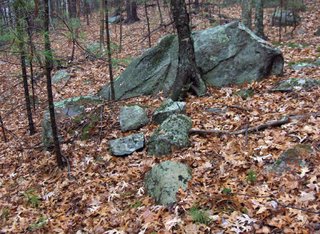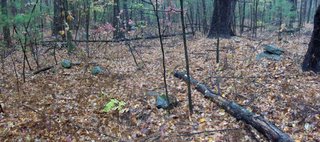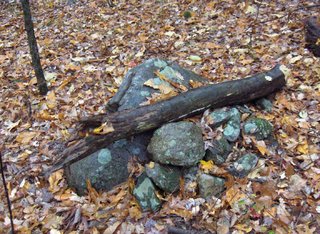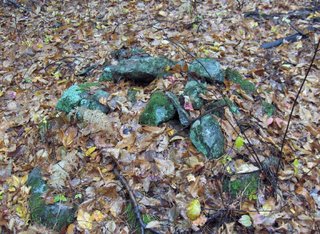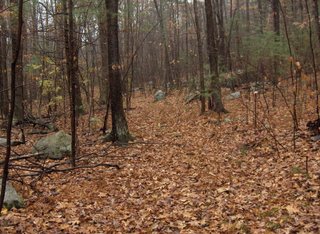(Perhaps start below on Part 1.)
From there I carried on uphill back across the northern end of the summit and over to the opposite foot on the northwest side of the hill. I skirted along there and saw first one boulder rock piles incorporating quartz and then a sequence of small piles on boulders as I followed the stone wall there at the foot of the hill.


 This last one was no more than 20 yards from where I had entered the woods in the first place and headed uphill. At least I spotted it on the way back.
This last one was no more than 20 yards from where I had entered the woods in the first place and headed uphill. At least I spotted it on the way back.Well this new cameras takes better pictures but it is less convenient than the old camera. Not only are there more pictures but also they have to be downsampled and moved around more.












